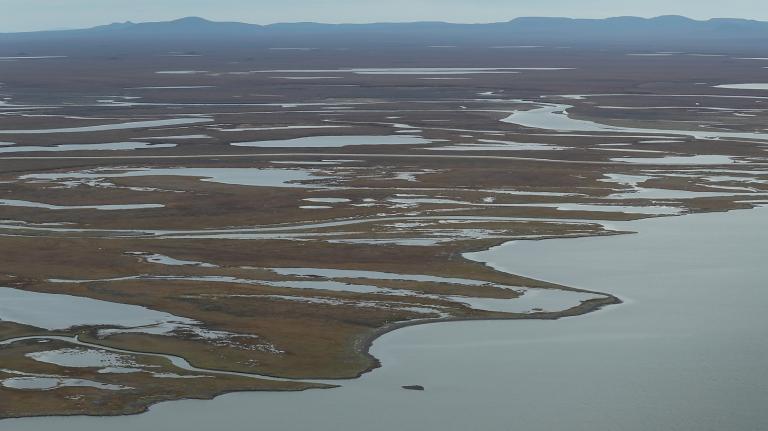 Over the last few years, three Columbia University professors learned how important language is when it comes to combating climate change. They queried 275 randomly selected U.S. citizens for their opinions on raising money to fund alternative energy projects and the like by adding fees to earth-warming activities such as driving cars and flying in airplanes. They got very different responses depending on how they asked the question.
Over the last few years, three Columbia University professors learned how important language is when it comes to combating climate change. They queried 275 randomly selected U.S. citizens for their opinions on raising money to fund alternative energy projects and the like by adding fees to earth-warming activities such as driving cars and flying in airplanes. They got very different responses depending on how they asked the question.
During online surveys, researchers switched up their language, referring to the fees as “taxes” for some, and “carbon offsets” for others. Broken down along party lines, the results showed that Democrats were almost equally likely to support the fees regardless of labeling. But independents’ support was roughly 60 percent stronger for an offset than for a tax. And Republicans were almost five times more likely to favor the fee if it was called an offset.
This is but one example, researchers say, of how framing is key when it comes to convincing people that climate change is an important issue, and why a better-framed and more pragmatic message would do the climate movement a lot of good. It’s not the first time people have pointed to a lack of marketing savvy among those pushing progressive causes, but with the public’s belief in climate change on the decline even while the risks increase, it is worth another look.
Those pushing back against climate change are up against a long list of obstacles that have made their issue far less popular in polls than even three years ago, including the recession, the rise of the Tea Party, the sharp decline in mainstream media coverage of climate change, and the outpouring of campaign contributions and ads from the fossil fuel industry. But climate activists have also just been “outmessaged” by their adversaries, who, for all their manipulation and dishonesty, understand better what resonates with the American public, says Kenneth Broad, director of the University of Miami’s Center for Ecosystem Science and Policy.
For those fighting climate change, Broad has this advice: “Know thy audience.”
Broad, who also co-directs the Center for Research on Environmental Decisions at Columbia University’s Earth Institute, was one of three scholars of human behavior who laid out research findings on climate change as a cultural issue at a Society of Environmental Journalists conference this fall.
One of Broad’s fellow panelists, University of Indiana researcher Shahzeen Attari, laid out the task of reaching the public like a marketing specialist would. You need to frame issues in ways that individuals can relate to, she said. Multiple frames help, she added, such as “saving energy is a double dividend. It’s good for the environment and it’s good for you and your own budget.”
“You also need to use frames that are very visible to your audience,” Attari said. “Time magazine had a cover story showing a polar bear about to drown. The problem is, when was the last time you saw the polar bear in its natural environment?”
Asked for examples of successful social campaigns that could offer lessons for climate activists, Broad offered up the fight 20 years ago to ban chlorofluorocarbons, which were linked to the destruction of the ozone layer. “People associated that with skin cancer and got worried about kids. There was an outpouring of concerns from mothers,” he said. “Climate change hasn’t been framed as a health issue. But disease vectors related to mosquitoes are coming closer. We’re going to have malaria in South Florida.”
Scary stuff — but even scaring the daylights out of people with local threats has its limits, said the third panelist, psychologist-turned-economist Michel Handgraaf, an associate professor of economics at Wageningen University in the Netherlands. Recent research in psychology shows that fear is not a great tactic because many people don’t like to be scared and end up simply ignoring your warning, Handgraaf said. He advocated the “efficacy” approach: convincing people that something can be done to remedy the situation.
Handgraaf framed the climate change dilemma through the story of peoples’ contrasting responses to the 2004 South Asia tsunami, and Africa’s ongoing hunger problems. “People aren’t giving money to Africa like to the tsunami victims, and the main reason, I think, is that the tsunami is something we can do something about. We give them money, and they can rebuild. They are OK again,” Handgraaf said. “Hunger problems in Africa are like a bottomless pit. You keep throwing money at it and it just doesn’t work.”
The next challenge: getting real about what actually can be done to ameliorate global warming. Last year, Attari and three other researchers conducted a study showing that when 525 people were asked to name the best way to save energy, the single biggest group, about 20 percent, responded, “Turn off the lights.” Studies show that this is flat wrong — people can save a lot more energy by installing energy-saving light bulbs and appliances, driving more fuel-efficient cars, and using solar and other green energy to heat and cool buildings.
But a separate 2011 survey by Yale researcher Anthony Leiserowitz and some colleagues offers hope for climate change advocates. As long as climate change was not mentioned in the questions, respondents showed wide, bipartisan support for measures that many experts say could lead to significant reductions in greenhouse-gas emissions. Majorities of Democrats, Republicans, independents, and even Tea Party members, for instance, supported more money for research into renewable energy sources, and tax rebates for people who buy energy efficient vehicles and solar panels. Majorities of all but Tea Party members supported requiring utilities to produce at least 20 percent of their electricity from renewable energy, even if household electric bills rose $100 a year.
Leiserowitz’s surveys also found strong bipartisan support for attacking global warming on local fronts — again with measures that weren’t called global warming fixes. They include requiring new homes to be more energy-efficient, building more bike paths, and increasing transit service. Independent voters also joined Democrats in supporting changing zoning rules to promote energy-efficient apartment buildings, mixed-use neighborhoods to encourage walking, and decreasing urban sprawl. Majorities of Democrats, independents, and Republicans also said it’s important to protect local water supplies, sewer systems, public health, agriculture, forests, wildlife, and coastlines from global warming.
Put all this together, and a major national effort, with simple clear messages, repeated often, by a variety of trusted sources, could not only restore public opinion on climate change to 2008 levels, but beyond, Leiserowitz said.
Leiserowitz acknowledged that progress on climate change rests on a whole host of factors, including the economy, the political makeup of Congress, the presidential election, and media coverage of the issue. But without better communication, he said, “we’re pretty much guaranteed that nothing will happen — or rather, that things will get worse.”
This is the second of two posts about Americans’ attitudes toward climate change. Read part 1 here.


